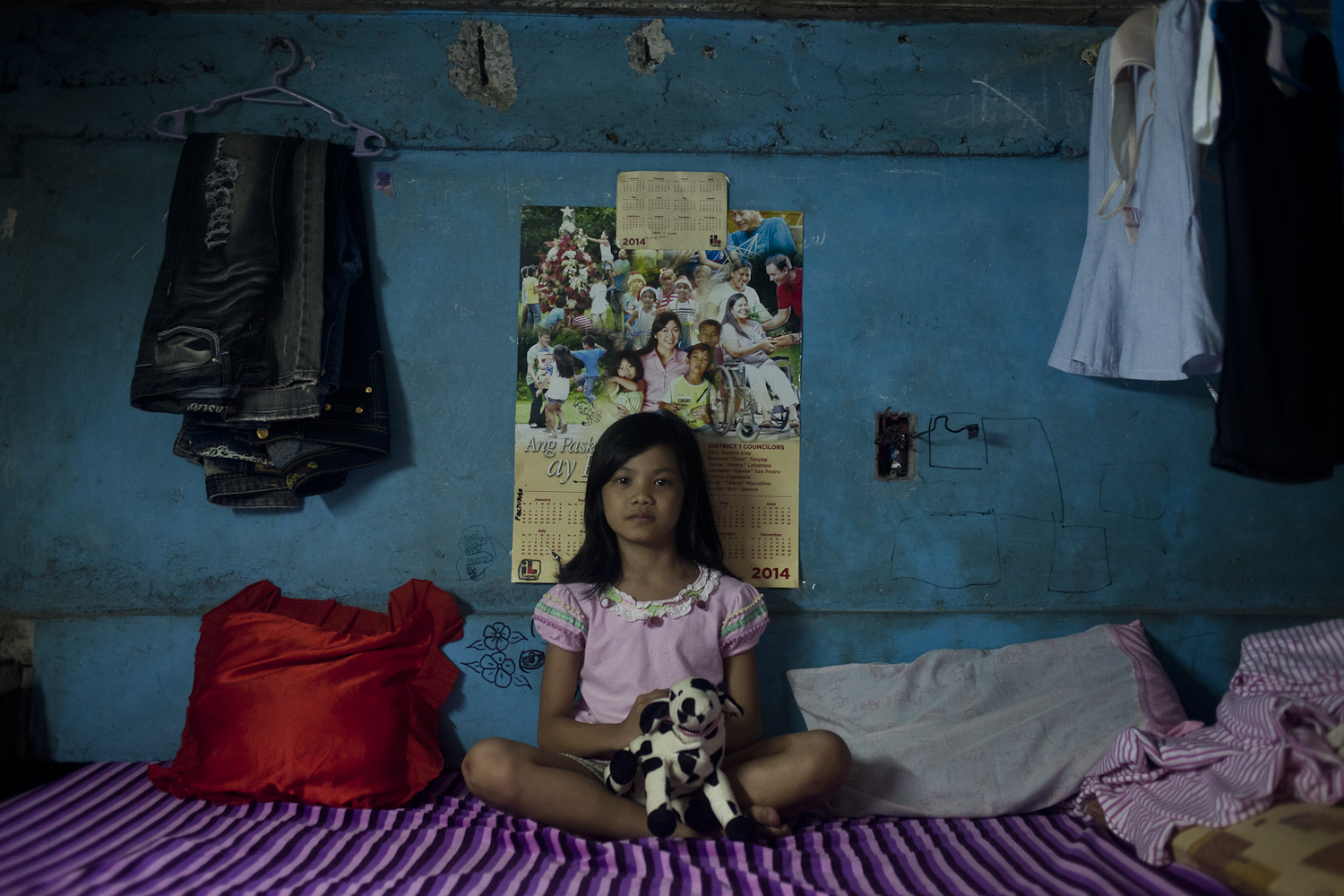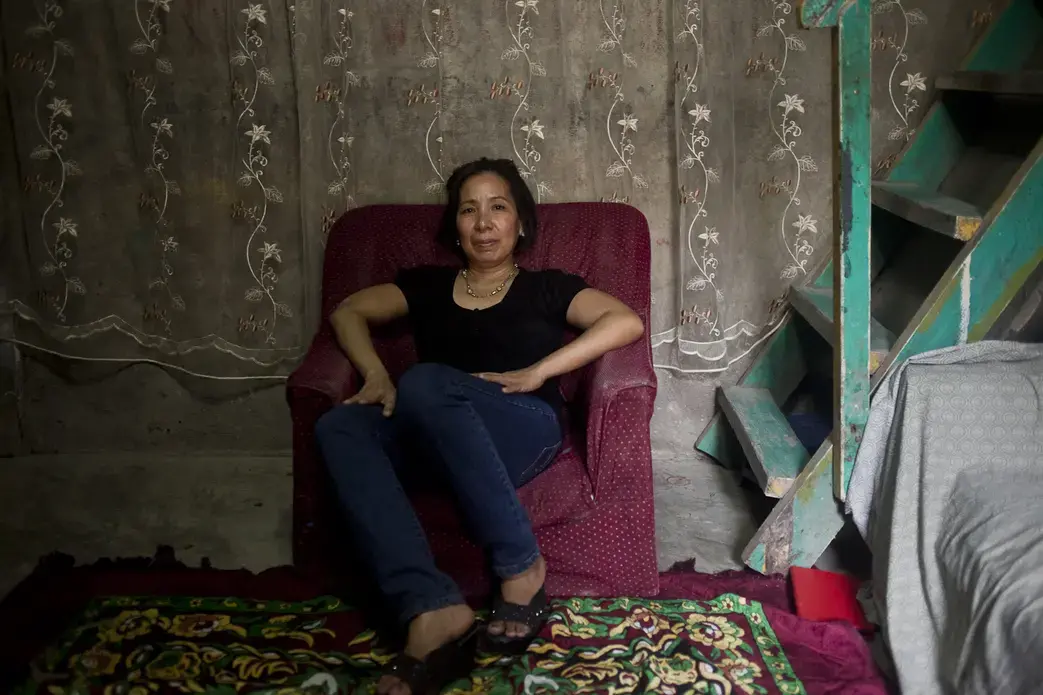In his high school yearbook, Doy Sierra stated as his ambition: "To go abroad".
Looking over his résumé, it would look as if Sierra has had a glittering career over the last three decades working in different parts of the world; first in the Middle East, then Japan and now, France.
Wherever a new job opened up and wherever there was money to be made, that's where he would be. In the 1980s it was Saudi Arabia and Kuwait where Sierra trailed after other Filipino men of his generation. They set up camp in the oil rigs and construction sites in the Gulf, infusing the sweat equity and physical collateral demanded by the construction boom. In the 1990s it was the fish ponds of Japan that called Sierra to work as an undocumented migrant.
Now, sitting in the living room of the sparse studio he shares with his wife and two young daughters, the 60-year-old Sierra is thinking about his twilight years. He and his wife both started their life in France as housekeepers-babysitters, but as he got older, there was less and less work for him.
Once his girls have finished school, he will return to the Philippines. "It's too cold here in France. I don't want to grow old here. I am a Filipino and the Philippines will always be home."
Sierra is one of the hundreds of thousands of Filipinos who saw labor migration as a temporary measure to an economic need such as saving up for a home or putting children through school. But working menial jobs—sometimes as undocumented migrants—has left them with little opportunity for advancement in the workplace and economic wiggle room to save up for their eventual return home.
The latest Country Migration Report estimates that since the 1970s when the state launched its migrant laborer employment program, between 3.5 million and 4.5 million Filipino labor migrants have permanently returned to the Philippines.
Ageing overseas Filipino workers (OFW) such as Sierra are retiring into the poverty that they tried so hard to escape.
Leading labor exporter
The Philippines is a leading labor exporter with more than 10 million Filipino workers scattered around the world. Since the start of the country's labor migration policy, the Middle East remains the main destination for labor migrants. The Commission on Overseas Filipinos estimates that almost 25 per cent of the 10 million Filipinos working overseas are based in the Middle East.
The government has earned praise for its labour migration policies that cover regulation and assistance at every touch point, from recruitment to departure to employment in the host country. But the government's weakest link in the labour migration chain is the reintegration of OFWs who can no longer work.
In countries where permanent residency or citizenship is not an option, the Filipinos will eventually have to come home. Many find that they have little to come home to and end up leaving again.
In 2002, Maribeth Manguerra left for Lebanon to work as a domestic worker after she lost her job at a local garments factory. "It will only be for a few years—just until we can save up some money," she told her children.
Now, more than a decade later, Manguerra is still working abroad as a domestic helper, this time in Saudi Arabia. In 2014, when she came home for her biannual vacation, her children and her husband asked her not to leave. The eldest of her four children was already working and another one was about to graduate. They would provide the economic pillars needed for the two youngest children to finish school.
Manguerra gave in to their pleas and told her employer that she would not be renewing her contract. She stayed—but only for a few months.
"There were no jobs [available] for me. I could not find work where I could make the same amount of money. I had no choice. I had to leave again," said Manguerra.
Mismatch of jobs
Government organisations such as the Overseas Workers Welfare Association (OWWA) and the National Centre for Reintegration of OFWs (NCRO) are tasked with ensuring that returning OFWs can settle back into the Philippine way of life.
"It is likely that they will prefer to start their own business," said Rosalinda Baldoz, secretary of the Department of Labour and Employment. "We have packaged our assistance through handholding activities such as [livelihood] grants that serve as starter kits."
Returning workers can obtain a loan of up to $6,300 (Dh23,140) plus various training programmes to start a new business as part of the OFW Reintegration Programme.
Labour groups have criticised these programmes as loan and business start-up programmes that are a mismatch to the specific needs of returnees.
Some do not have the drive or energy to start a new business and others are simply too old to be employed.
"Some have been away for so long, but have not had an opportunity to upgrade their skill set. When they move back here, they cannot make the same amount working as a domestic helper as they did when they were abroad," said Roel Martin, NCRO chief of the labor and employment department.
Martin says that the problem is also data—or lack of it. With the premise that returning guest workers are moving back into familiar territory, returnees are not offered the same handholding as those leaving.
Data that drill down into the details such as the age of returning migrants are almost non-existent. Migrants are tracked on a per contract or deployment basis. There is currently no database system that would track their employment history as they move—as Sierra did—from country to country.
"The lack of data makes it difficult to plan programmes that would actually match their needs," said Martin.
He cites another factor in the migrant mix: a low level of financial literacy prevents the migrants from saving up while they are still earning good money. Other factors such as continuously helping out extended members of the family cripple attempts at building a financial nest egg that they can fall back on.
Then there are factors beyond their control. The International Labour Organization (ILO) cites migrant workers and their families as "constantly exposed to various risks that require huge levels of spending, such as illnesses, accidents, natural and man-made disasters".
Studies show that an estimated 60 per cent of OFW families remain poor despite many years of working abroad.
Seafarers saving up
The Philippines is the largest supplier of the world's seafarers. Nearly 700,000 Filipinos comprise the seafaring workforce and about a third work on foreign vessels.
In his many years at sea, Jess Morales saw that few Filipino seafarers would advance up the nautical ranks. But even if they did rise to captain and make "as much as $5,000 a month", it did not matter much — both would often retire into the same pay grade.
"There is always this one-day millionaire mentality. We live for the moment. We have to be practical. There will come a time when we cannot set sail anymore," he said. "A seafarer is only as good as his last deployment."
Technically, there is no age limit set in the shipping industry, but in reality, "ship owners will want younger crew members".
Morales set up the Integrated Seafarers of the Philippines (ISP), an NGO and cooperative that is working on both ends of the remittance lifeline, teaching financial literacy to both the giver and the receiver. "We call the wives in for our financial management sessions. She is the one in charge of the purse strings."
Maybe if programs such as this had been in place during the periods in time Sierra tried to resettle in the Philippines, he would not have had to leave every time he couldn't make ends meet. Maybe he would have learnt how to save more.
Now, after 33 years of working, he is dreading retirement. "I have not saved anything. The only thing I have accumulated are years [added] to my age."













